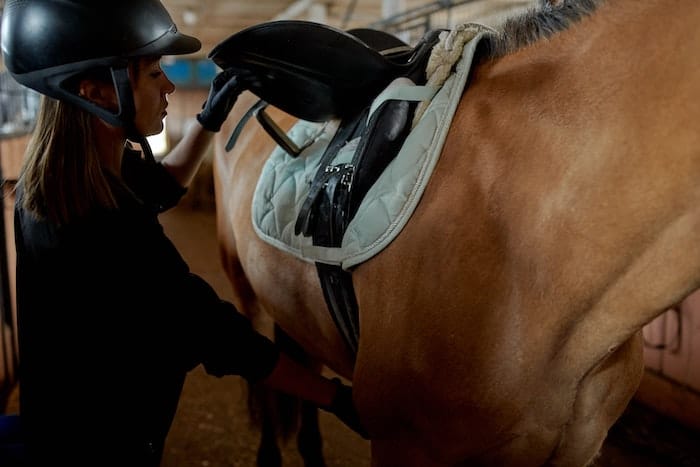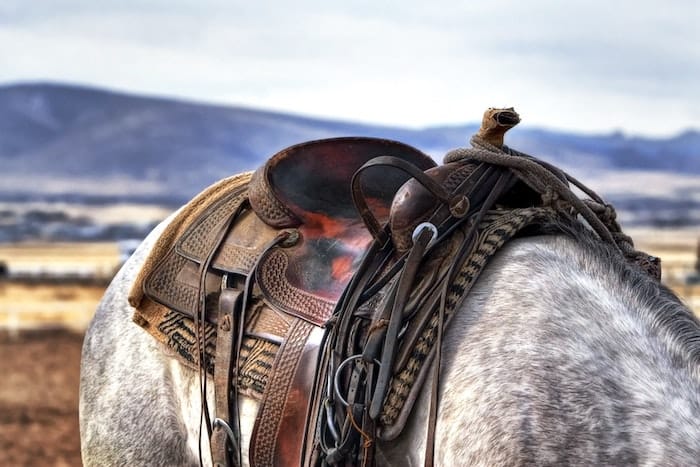If you’re a horse rider or someone just looking to learn more about being an equestrian, you may be looking for essential pieces that will improve your comfort and saddle fit for best experience in riding. You can see posts about equestrianism on this site here.
Fortunately, there are saddle pads or numnah that provide additional cushioning for you and your horse by preventing the saddle from causing discomfort or pain due to chafing and pressure.
However, with so many different types available on the market today and all of them featuring their own set of benefits, materials, styles, and designs, it can take time to decide which type would best suit you and your four-legged companion and here’s a guide to help you out.
Introducing Saddle Pads
A numnah is an essential piece of any horse-riding setup as it provides cushioning and shock absorption for the horse when pressure is applied from the saddle, making it far more comfortable for the animal.
These blankets not only ensure that your saddle’s underside remains clean and well-protected from wear and tear, but they are also highly versatile. You can have a diverse selection of sizes and styles on the market which means that you can express yourself with style while riding.
For new riders, having saddle pads for all disciplines is essential in order to maximize comfort and minimize break-in time. The blankets create an additional layer of protection both for the horse and rider and whether you’re into dressage, jumping or endurance disciplines, you can be sure that there’s something out there that will fit you best.
What are the Types Available?
There are various types of saddle pads to know about: sheepskin or wool fleece, polyester, cotton, gel, and synthetic. Polyester is known for filling the inside of the pad for extra cushion and comfort. Fleece is a bit more finicky but can be quite comfortable while protecting the back of the animal during long rides.
For everyday use and those on a budget, synthetic ones offer great cushioning and durability in an affordable package. Wool might be more costly than synthetic parts, but they are well-known for their wicking features and maximum comfort. Depending on your needs, you can also choose among shaped, corrective, corrective half, western, sheepskin, and square types.
Which Size to Choose?
The numnah can come in three sizes. The smaller ones are ideal for saddles and they are great for 16″ when riding ponies. In contrast, medium-sized saddle pads offer the best fit for saddles between 16.5 “and -17″, making them perfect for a Galloway or cob horse. Any size larger than 17” is suited perfectly with a large pad designed specially to cater to huge mounts.
When choosing a saddle pad, always consider your horse’s back contour and underside. You don’t want to accidentally cause any hurt on the spinal part by applying too much pressure. Also, consider the height of your horse’s withers when looking at pads since if they have high ones, it is sensible to get a higher-cut pad for the best results.
Maintaining Tips to Know
As mentioned, the numnahs are an important piece of equipment for any horse owner, providing cushioning, protection, and pressure distribution while helping create a better bond between rider and horse. To ensure that this helpful accessory is always in tip-top condition, it’s important to establish a regular maintenance routine. Cleaning and storing your saddle pads correctly should be at the top of the list.
First, keep your saddle pads clean and fresh by gently brushing it after each ride to get rid of hair and dirt. For a more through cleansing, soak the pad in warm water with an appropriate mild detergent specifically designed for horse tack. Use a shedding or curtain brush to remove persistent stains afterwards. Avoid fabric softeners when washing them and set the spin cycle no higher than 600 rpm. Don’t leave them out under direct sunlight, instead air-dry indoors until completely dry before storing away again.
If your western pad is made up of wool, power washing is the recommended method to keep it in perfect condition. For synthetic felt, a much simpler process will be more than enough. However, if necessary, you can use gentle detergent to ensure that the fibers remain comfortable and secure between layers. Utilize a detergent specifically designed for fur to keep it soft and prevent any coarseness. Also remember that too much bleach in a standard solution could damage the fibers of the coat if not used properly.
To ensure the utmost care and protection of your sheepskin saddle pad, it is important to keep the water temperature at 30°C or below. Also, with the high absorbency level of the material, selecting an “Extra Water” option on a washing machine’s settings can provide optimal results. If this feature isn’t available in your appliance, 4-5 liters of water should be added directly into its drum before proceeding. When possible, try only to wash one pad at a time not to overload the capacity.
What Features Should You Look For
When it comes to making the right choice for your horse, there are many features you should consider. Select a saddle that fits their back and offers close contact between you and your horse to ensure comfort. See more about choosing the right blanket or extra cushioning when you click here: https://www.thesprucepets.com/choosing-a-western-saddle-pad-or-blanket-1886304.
Another important factor when selecting an appropriate saddle is its weight; you should consider it lightweight but reliable. Foam or soft leather are ideal as they provide sufficient support for yourself and your horse. It’s also best to consider selecting a model with integrated panels designed to provide even more cushioning without extra bulk.
With so many options to pick from, determining which one is the ideal fit for you and your horse may appear daunting, even if you’re an avid equestrian. But, it’s essential to select the appropriate pad in order to guarantee both rider and horse safety.
Related Reading


